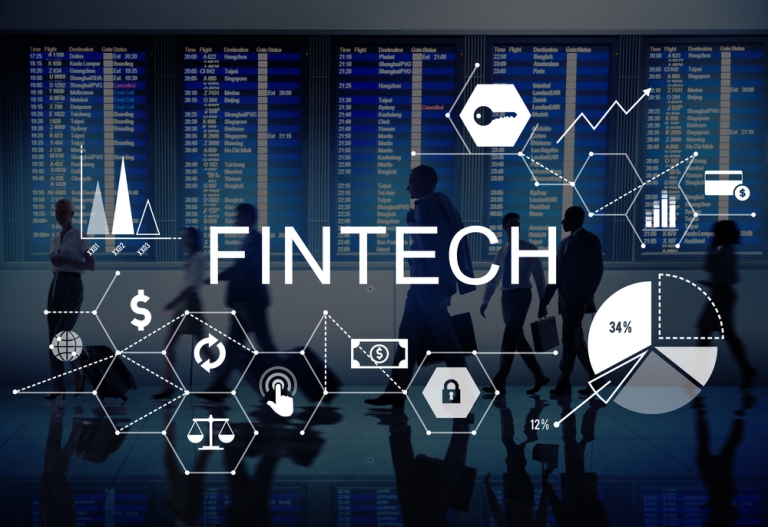News

Financial Technology – Fintech
What Is Financial Technology – Fintech?
Financial technology (Fintech) is used to describe new tech that seeks to improve and automate the delivery and use of financial services. At its core, fintech is utilized to help companies, business owners and consumers better manage their financial operations, processes, and lives by utilizing specialized software and algorithms that are used on computers and, increasingly, smartphones. Fintech, the word, is a combination of "financial technology".
When fintech emerged in the 21st Century, the term was initially applied to the technology employed at the back-end systems of established financial institutions. Since then, however, there has been a shift to more consumer-oriented services and therefore a more consumer-oriented definition. Fintech now includes different sectors and industries such as education, retail banking, fundraising and nonprofit, and investment management to name a few.
Fintech also includes the development and use of crypto-currencies such as bitcoin. That segment of fintech may see the most headlines, the big money still lies in the traditional global banking industry and its multi-trillion-dollar market capitalization.

Understanding Fintech
Broadly, the term "financial technology" can apply to any innovation in how people transact business, from the invention of digital money to double-entry bookkeeping. Since the internet revolution and the mobile internet/smartphone revolution, however, financial technology has grown explosively, and fintech, which originally referred to computer technology applied to the back office of banks or trading firms, now describes a broad variety of technological interventions into personal and commercial finance.
Fintech now describes a variety of financial activities, such as money transfers, depositing a check with your smartphone, bypassing a bank branch to apply for credit, raising money for a business startup, or managing your investments, generally without the assistance of a person. According to EY's 2017 Fintech Adoption Index, one-third of consumers utilize at least two or more fintech services and those consumers are also increasingly aware of fintech as a part of their daily lives.
KEY TAKEAWAYS
- Fintech refers to the integration of technology into offerings by financial services companies in order to improve their use and delivery to consumers.
- It primarily works by unbundling offerings by such firms and creating new markets for them. Startups disrupt incumbents in the finance industry by expanding financial inclusion and using technology to cut down on operational costs.
- Fintech funding is on the rise but regulatory problems abound.
Fintech in Practice
The most talked-about (and most funded) fintech startups share the same characteristic: they are designed to be a threat to, challenge, and eventually usurp entrenched traditional financial services providers by being more nimble, serving an underserved segment or providing faster and/or better service.
For example, Affirm seeks to cut credit card companies out of the online shopping process by offering a way for consumers to secure immediate, short-term loans for purchases. While rates can be high, Affirm claims to offer a way for consumers with poor or no credit a way to both secure credits and also build their credit histories. Similarly, Better Mortgage seeks to streamline the home mortgage process (and obviate traditional mortgage brokers) with a digital-only offering that can reward users with a verified pre-approval letter within 24 hours or applying. GreenSky seeks to link home improvement borrowers with banks by helping consumers avoid entrenched lenders and save on interest by offering zero-interest promotional periods.
For consumers with no or poor credit, Tala offers consumers in the developing world microloans by doing a deep data dig on their smartphones for their transaction history and seemingly unrelated things, such as what mobile games they play. Tala seeks to give such consumers better options than local banks, unregulated lenders and other microfinance institutions.
In short, if you have ever wondered why some aspect of your financial life was so unpleasant (such as applying for a mortgage with a traditional lender) or felt like it wasn't quite the right fit, fintech probably has (or seeks to have) a solution for you. For example, fintech seeks to answer questions like, "Why is what makes up my FICO score so mysterious and how it is used to judge my creditworthiness?"
As such, loan originator Upstart wants to make FICO (as well as other lenders both traditional and fintech) obsolete by using different data sets to determine creditworthiness. They include employment history, education, and whether a would-be borrower knows their credit score to decide on whether to underwrite and how to price loans. Similar treatment is given to financial services that range from bridge loans for house flippers (LendingHome), to a digital investment platform that addresses the fact that women live longer and have unique savings requirements, tend to earn less than men and have different salary curves that can leave less time for savings to grow (Ellevest).
Fintech's Expanding Horizons
Up until now, financial services institutions offered a variety of services under a single umbrella. The scope of these services encompassed a broad range from traditional banking activities to mortgage and trading services. In its most basic form, Fintech unbundles these services into individual offerings. The combination of streamlined offerings with technology enables fintech companies to be more efficient and cut down on costs associated with each transaction.
If one word can describe how many fintech innovations have affected traditional trading, banking, financial advice, and products, it's 'disruption,' like financial products and services that were once the realm of branches, salesmen and desktops move toward mobile devices or simply democratize away from large, entrenched institutions.
For example, the mobile-only stock trading app Robinhood charges no fees for trades, and peer-to-peer lending sites like Prosper Marketplace, Lending Club and OnDeck promise to reduce rates by opening up competition for loans to broad market forces. Business loan providers such as Kabbage, Lendio, Accion and Funding Circle (among others) offer startup and established businesses easy, fast platforms to secure working capital. Oscar, an online insurance startup, received $165 million in funding in March 2018. Such significant funding rounds are not unusual and occur globally for fintech startups.
Entrenched, traditional banks have been paying attention, however, and have invested heavily into becoming more like the companies that seek to disrupt them. For example, investment bank Goldman Sachs launched consumer lending platform Marcus in 2016 and recently expanded its operations to the United Kingdom.
That said, many tech-savvy industry watchers warn that keeping apace of fintech-inspired innovations requires more than just ramped up tech spend. Rather, competing with lighter-on-their-feet startups requires a significant change in thinking, processes, decision-making, and even overall corporate structure.
Fintech and New Tech
New technologies, like machine learning/artificial intelligence, predictive behavioral analytics, and data-driven marketing, will take the guesswork and habit out of financial decisions. "Learning" apps will not only learn the habits of users, often hidden to themselves, but will engage users in learning games to make their automatic, unconscious spending and saving decisions better. Fintech is also a keen adaptor of automated customer service technology, utilizing chatbots to and AI interfaces to assist customers with basic task and also keep down staffing costs. Fintech is also being leveraged to fight fraud by leveraging information about payment history to flag transactions that are outside the norm.
Fintech Landscape
Fintech startups received $17.4 billion in funding in 2016 and were on pace to surpass that sum as of late 2017, according to CB Insights, which counted 26 fintech unicorns globally valued at $83.8 billion. The same firm reported that there were 39 VC-backed fintech unicorns worth $147.37 billion by the end of 2018.
North America produces most of the fintech startups, with Asia a relatively close second. Global fintech funding hit a new high in the first quarter of 2018 let by a significant uptick in deals in North America. Asia, which could surpass the United States in fintech deals, also saw a spike in activity. Funding activity in Europe was at a five-quarter low in Q1 2018 but surged back in Q2.
Some of the most active areas of fintech innovation include or revolve around the following areas:
- Cryptocurrency and digital cash.
- Blockchain technology, including Ethereum, a distributed ledger technology (DLT) that maintain records on a network of computers, but has no central ledger.
- Smart contracts, which utilize computer programs (often utilizing the blockchain) to automatically execute contracts between buyers and sellers.
- Open banking, a concept that leans on the blockchain and posits that third-parties should have access to bank data to build applications that create a connected network of financial institutions and third-party providers. An example is the all-in-one money management tool Mint.
- Insurtech, which seeks to use technology to simplify and streamline the insurance industry.
- Regtech, which seeks to help financial service firms meet industry compliance rules, especially those covering Anti-Money Laundering and Know Your Customer protocols which fight fraud.
- Robo-advisors, such as Betterment, utilize algorithms to automate investment advice to lower its cost and increase accessibility.
- Unbanked/underbanked, services that seek to serve disadvantaged or low-income individuals who are ignored or underserved by traditional banks or mainstream financial services companies.
- Cybersecurity, given the proliferation of cybercrime and the decentralized storage of data, cybersecurity and fintech are intertwined.
Fintech Users
There are four broad categories of users for fintech: 1) B2B for banks and 2) their business clients, and 3) B2C for small businesses and 4) consumers. Trends toward mobile banking, increased information, data, and more accurate analytics and decentralization of access will create opportunities for all four groups to interact in heretofore unprecedented ways.
As for consumers, as with most technology, the younger you are the more likely it will be that you are aware of and can accurately describe what fintech is. The fact is that consumer-oriented fintech is mostly targeted toward millennials given the huge size and rising earning (and inheritance) potential of that much-talked-about segment. Some fintech watchers believe that this focus on millennials has more to do with the size of that marketplace than the ability and interest of Gen Xers and Baby Boomers in using fintech. Rather, fintech tends to offer little to older consumers because it fails to address their problems.
When it comes to businesses, before the advent and adoption of fintech, a business owner or startup would have gone to a bank to secure financing or startup capital. If they intended to accept credit card payments they would have to establish a relationship with a credit provider and even install infrastructure, such as a landline-connected card reader. Now, with mobile technology, those hurdles are a thing of the past.
Regulation and Fintech
Financial services are among the most heavily regulated sectors in the world. Not surprisingly, regulation has emerged as the number one concern among governments as fintech companies take off.
As technology is integrated into financial services processes, regulatory problems for such companies have multiplied. In some instances, the problems are a function of technology. In others, they are a reflection of the tech industry's impatience to disrupt finance.
For example, automation of processes and digitization of data makes fintech systems vulnerable to attacks from hackers. Recent instances of hacks at credit card companies and banks are illustrations of the ease with which bad actors can gain access to systems and cause irreparable damage. The most important questions for consumers in such cases will pertain to the responsibility for such attacks as well as misuse of personal information and important financial data.
There have also been instances where the collision of a technology culture that believes in a "Move fast and break things" philosophy with the conservative and risk-averse world of finance has produced undesirable results. San Francisco-based insurtech startup Zenefits, which was valued at over a billion dollars in private markets, broke California's insurance laws by allowing unlicensed brokers to sell its products and underwrite insurance policies. The SEC fined the firm $980,000 and they had to pay $7 million to California's Department of Insurance.
Regulation is also a problem in the emerging world of cryptocurrencies. Initial coin offerings (ICOs) are a new form of fundraising that allows startups to raise capital directly from lay investors. In most countries, they are unregulated and have become fertile ground for scams and frauds. Regulatory uncertainty for ICOs has also allowed entrepreneurs to slip security tokens disguised as utility tokens past the SEC to avoid fees and compliance costs.
Because of the diversity of offerings in fintech and the disparate industries it touches, it is difficult to formulate a single and comprehensive approach to these problems. For the most part, governments have used existing regulations and, in some cases, customized them to regulate fintech.
They have established fintech sandboxes to evaluate the implications of technology in the sector. The passing of General Data Protection Regulation, a framework for collecting and using personal data, in the EU is another attempt to limit the amount of personal data available to banks. Several countries where ICOs are popular, such as Japan and South Korea, have also taken the lead in developing regulations for such offerings to protect investors.




